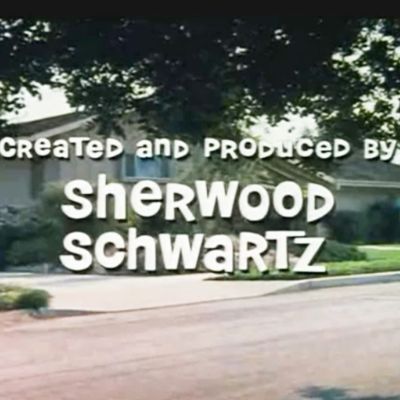

YesterdayÔÇÖs passing of GilliganÔÇÖs Island and The Brady Bunch creator Sherwood Schwartz at the age of 94 certainly doesnÔÇÖt qualify as a tragedy: He lived a long, rich life filled with success and the love of family, friends, and fans (as he notes here). And yet, when the news of his death broke (over Twitter, of course), there was a palpable and somewhat surprising sense of loss for pop-culture junkies who count themselves as Gen X-ers or baby-boomers. And thatÔÇÖs because, while Schwartz wasnÔÇÖt a beloved actor or legendary director, for many of us he was the original ÔÇ£showrunnerÔÇØ ÔÇö before we even knew what that word meant. Like Sid and Marty Krofft or the ChildrenÔÇÖs Television Workshop, his name was seared onto our kiddie eyeballs as evidence that the characters we loved on the small screen were the products of one personÔÇÖs imagination. After all, besides the Brady clan looking up and down at each other from within their tic-tac-toe prison cells, whatÔÇÖs the one image you remember from each episode of the show? ÔÇ£Created and Produced By Sherwood Schwartz,ÔÇØ plastered over a still picture of the BradysÔÇÖ A-frame mid-century abode at 4222 Clinton Way. ÔÇ£He was the first TV comedy writer I knew by name,ÔÇØ Cougar Town co-creator Bill Lawrence told Vulture.
Long before Dick Wolf or David E. Kelley started calling themselves ÔÇ£brands,ÔÇØ Schwartz ÔÇö weÔÇÖre betting almost entirely by accident ÔÇö managed to turn his two successes into TV institutions whose cultural relevance far outlasted their prime-time runs (three seasons for GilliganÔÇÖs, five for Brady). Syndication was a big part of the equation: Back in the days when kids didnÔÇÖt have 150 channels to choose from, or the Internet, afternoons meant flipping past Donahue and game shows to get to syndicated repeats of wacky, broadly appealing comedies such as the ones Schwartz produced. Hardly monster hits in their initial runs, Brady and GilliganÔÇÖs became after-school staples for millions of kids and preteens (including more than a few latchkey children looking for substitute parents). When cable came around in the early eighties, Superstation TBS and Nick at Nite kept the shows alive for another generation of kids.
But it wasnÔÇÖt just syndication that kept SchwartzÔÇÖs creations culturally relevant. Much as Gene Rodenberry kept Star Trek alive ÔÇö and made it bigger after its original run ÔÇö Schwartz capitalized on the never-ending nostalgia for his late sixties/early seventies shows by mounting reunions and spinoffs. While GilliganÔÇÖs had at least two animated offspring, and three prime-time movies (one with the Harlem Globetrotters!), Brady Bunch was most Trek-like in its afterlife. There was the cartoon, the variety show, the TV movies, and two ill-fated series with the Brady kids all grown up. Then, in the nineties, Paramount rebooted Bradys with a big-screen movie adaptation that recast the original clan but kept their characters (emotionally) stuck in the seventies; it was a shrewd move that both poked fun at the show and acknowledged peopleÔÇÖs lingering warmth for it. The last Brady movie, in which the gang took over the White House, came out in 2002, nearly 30 years after the original series signed off the air. Even though Schwartz only had two significant hit shows, he turned both into icons, and thus became an icon himself. As The Office showrunner Paul Lieberstein told Vulture via-email, ÔÇ£There was no one who shaped my childhood more. I could easily draw you a map of GilliganÔÇÖs Island and a floor plan of the Brady Bunch house ÔÇö and IÔÇÖm not even sure if my own childhood home had two stories.ÔÇØ

